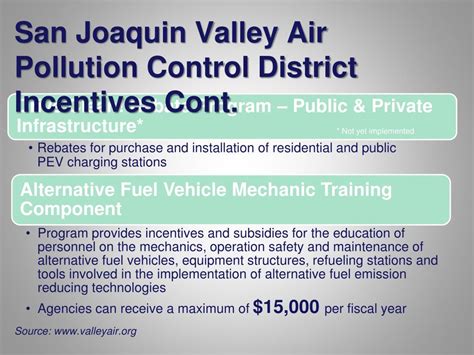The San Joaquin Valley (SJV) is renowned for its agricultural richness and diverse communities. However, it also faces significant environmental challenges, including poor air quality and high greenhouse gas emissions. To combat these issues, the region has embraced innovative solutions, including the San Joaquin Valley Electric Vehicle (EV) Rebate Program. This initiative seeks to encourage residents to transition to electric vehicles, promoting sustainability while enhancing community well-being.
Understanding the SJV EV Rebate Program
The San Joaquin Valley EV Rebate Program is a collaborative effort launched by local governments, nonprofits, and environmental organizations aimed at accelerating the adoption of electric vehicles (EVs) across the region. With generous rebates available to qualifying residents, the program seeks to decrease reliance on fossil fuels and promote cleaner air.
How the Program Works
Residents interested in switching to an electric vehicle can apply for a rebate after purchasing or leasing an eligible EV. The program offers financial incentives that cover a significant portion of the vehicle’s cost, making it more accessible to low- and moderate-income households. Additional funds are also available for EV charging infrastructure, supporting the installation of home charging stations.
Environmental Impact
The San Joaquin Valley is one of the regions in California with the highest levels of air pollution, largely due to the heavy traffic and agricultural activities. By promoting electric vehicles, the SJV EV Rebate Program aims to reduce emissions and improve air quality.
Electric vehicles produce zero tailpipe emissions, significantly decreasing the number of pollutants released into the atmosphere. As more residents adopt EVs, the benefits are expected to be felt in the form of cleaner air, which will ultimately lead to healthier communities.
Economic Benefits
Beyond environmental benefits, the program is also fostering economic growth within the San Joaquin Valley. As more people invest in electric vehicles, local businesses involved in the automotive and energy sectors stand to gain. Additionally, the program is creating jobs related to EV maintenance and charging infrastructure installation.
The rebates boost consumer spending in the region, as households save money on fuel and maintenance costs associated with conventional gasoline vehicles. Less dependency on fossil fuels can create a ripple effect, stimulating the local economy and fostering a culture of sustainability.
Community Engagement and Education
Education and community engagement play vital roles in the success of the SJV EV Rebate Program. Local workshops, informational booths, and online resources are being utilized to inform residents about the benefits of switching to electric vehicles. These outreach efforts aim to dispel common myths about EVs, particularly regarding range anxiety, charging accessibility, and performance.
Community events, such as “Ride and Drive” days, allow residents to test drive electric vehicles, giving them a firsthand experience that encourages informed decision-making. Involving local clubs and organizations in these initiatives fosters a sense of community and collective responsibility toward sustainability.
Challenges and Solutions
While the SJV EV Rebate Program has seen promising success, challenges remain. Some residents may be hesitant to switch to electric vehicles due to misconceptions or financial constraints. Addressing these issues requires a sustained effort in both education and subsidies.
Partnerships with community organizations can help tailor outreach to specific populations, ensuring everyone has access to information about available incentives. Additionally, expanding the network of fast-charging stations can alleviate concerns about range and make electric vehicles more practical for everyday use.
Conclusion
The San Joaquin Valley EV Rebate Program represents a significant step toward transforming transportation in the region. By promoting electric vehicle adoption, the initiative is not only addressing the environmental issues plaguing the area but also enhancing economic opportunities and community engagement. As more residents step into the electric future, better air quality and sustainable living will become attainable goals. The success of this program can serve as a model for similar initiatives in other regions, proving that collective action can lead to lasting change.
FAQs
1. Who is eligible for the EV rebate?
To qualify for the rebate, applicants must be residents of the San Joaquin Valley and meet specific income and residency criteria. Details can be found on the program’s official website.
2. How much is the rebate?
The amount of the rebate varies depending on the vehicle type and the applicant’s income level. Typically, rebates can range from $1,000 to $7,000.
3. Are used electric vehicles eligible for the rebate?
Yes, the program offers rebates for both new and used electric vehicles. However, the specific eligibility criteria must be met for used vehicles as it may vary.
4. How can I apply for the Rebate?
Residents can apply for the rebate online through the program’s official portal. Additional resources, including helpdesk assistance, are available for applicants.
5. What types of electric vehicles are included in the program?
Most battery electric vehicles (BEVs) and plug-in hybrid electric vehicles (PHEVs) are eligible under the program. A full list of eligible models is available on the program’s website.
Download San Joaquin Valley Ev Rebate
